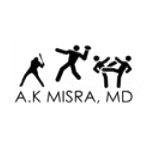Health Tips brought to you by U.S. HealthWorks Medical Group. Our experienced medical experts provide information here that we hope will broaden your healthcare knowledge.
We are well into baseball season, and anyone who tunes into the news or sports reports has likely heard the term “Tommy John surgery” recently. Today Dr. Anuruddh Misra, sports medicine expert and medical director for U.S. HealthWorks in South San Francisco, demystifies this common sports injury. Dr. Misra is double Board Certified in Sports Medicine and Internal Medicine.
Q: What is “Tommy John” injury or surgery, and why do we hear of it so commonly in the media as it relates to baseball injuries?
Tommy John was a Major League Baseball pitcher who was the first ever to undergo a surgical procedure to address his injured Ulnar Collateral Ligament (UCL), located on the inside (medial) aspect of the elbow. This ligament bears the brunt of stress forces in the pitching motion from a biomechanics standpoint.
Simply put, the elbow was not designed for such repeated forceful overhead throwing motions, which is specifically why it is so prevalent in pitchers. In time, this ligament (UCL) bears the focal point of stress during the most explosive phase of the the pitching motion (late cocking/early acceleration), resulting in a spectrum of different grades of injury, sometimes resulting in the need for surgical reconstruction/repair.
Q: Is Tommy John injury difficult to recover from?
The recovery depends on a few factors, including the severity of injury, chronological and biological age of the athlete, skill of the treating surgeon (if surgery is required), and the quality of the rehabilitation program the pitcher is using.
While surgery will usually correct the injury, the recovery time from the surgery is often greater than one year. For those who do not undergo surgery, the recovery rate depends on the factors as listed above.
Q: Is this a problem for amateur athletes too? Should youth athletes be concerned? What can be done to prevent this injury?
Absolutely, yes. This problem is an epidemic and it’s out of control. The single best step toward preventing this problem has been the institution of pitch counts in youth baseball leagues (i.e. Little League). You will also see pitch counts at all baseball stadiums throughout America thanks to the efforts of sports medicine professionals, including my mentor from my Sports Medicine fellowship, Dr. James Andrews. He has been the primary driving force behind spearheading the efforts to reduce the prevalence of this injury.
A side note: Both Dr. Andrews and another colleague of mine, Kevin Wilk, DPT, developed an app last year called “Throw Like a Pro.” Prior to this, Dr. Andrews founded “STOP Sports Injuries” which has been a tremendous resource for coaches, parents and athletes alike. I recommend both the app and this website as excellent resources for those interested in learning more about injury prevention.
This is an exciting time of research and science in the management of UCL injuries. I am proud to be part of an active research project with Dr. Andrews that is nearing completion about the non-operative management of UCL injuries. This involves biologics, i.e. extracting the healing factors from blood products including Platelet Rich Plasma, to encourage and advance healing of injured UCLs for which surgery is not the first treatment recommendation.
Dr. Anuruddh “A.K.” Misra is a Medical Director with U.S. HealthWorks in South San Francisco. Dr. Misra is accomplished in the highly competitive field of sports medicine.








